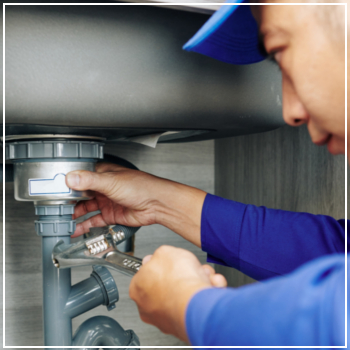What Issues Can Arise From Outdated Plumbing?
 When you purchase an older home, it may also come with older heating, electrical and plumbing systems that require upgrades to work more efficiently.
When you purchase an older home, it may also come with older heating, electrical and plumbing systems that require upgrades to work more efficiently.
Particularly when it comes to plumbing, homes built before the 1990s often have narrower pipes, which are more susceptible to clogs, and outdated features like house traps.
Certain materials like brass or lead, once considered innovative, may now be corroded, resulting in leaks, harmful substances in your water supply or clogs. If you have an older house, here are some of the issues you could be facing.
Older Materials
Post-1990, homes were built with larger-diameter pipes to accommodate more modern appliances and usage. Also, PVC and PEX pipes became preferred for their strength and greater corrosion resistance.
Depending on when your property was built and if it’s had any upgrades, an older home may still have:
- Lead Pipes: In certain cities, you’ll still find lead pipes for sewer and main lines. Its strength and malleability made it ideal during the first half of the 20th century but now, lead pipes can corrode and leach harmful substances into the water.
- Brass Pipes: Another older material, brass pipes were once also used for their strength but like copper and lead, can corrode from the inside out. Rate of corrosion varies with the quality of a region’s water supply.
- Galvanized Iron Pipes: Introduced in the 1960s, galvanized iron pipes feature a layer of zinc for strength. Yet over the decades, this layer eventually thins out and the pipes start to rust from the interior. Older galvanized pipes may break or become susceptible to clogs due to rust accumulating inside.
- Polybutylene Pipes: One of the first plastic pipes on the market, polybutylene doesn’t have the durability of PVC or PEX. Introduced in the 1970s and used through the mid-1990s, these pipes were taken off the market due to the reaction water had with the material, leading to cracks and breakage. While properties are no longer built with these pipes, homes constructed during the 1980s have a higher risk of using this type of plumbing.
- Orangeburg Pipes: This metal-free alternative was developed during World War II. Initially advertised as a non-corroding pipe, Orangeburg material starts with wood fiber pulp, which is bound with hot pitch or tar. The material proved to be a viable option due to metal shortages during the war and Orangeburg pipes were installed in homes up to the 1970s. However, routine water exposure eventually results in warping and peeling, and the composition can be penetrated and choked off by tree roots. In turn, Orangeburg pipes may become fully sealed off, resulting in a sewage backup or collapse from pressure.
House Traps
Also known as waste traps, this older plumbing feature shaped like a “U” was introduced in the mid-20th century to control odorous gasses passing up from the drain. While it worked at the time, house traps can degrade and constrict plumbing or become a source of clogs.
Especially if your home was constructed around this time, you may be dealing with a house trap if your sink and toilet regularly experience clogs or backups, you may see standing water in your drain, your basement experiences flooding or you notice a strong, foul odor inside.
Pipe Bellies
With pipes located underneath the home or grounds, a shifting foundation can affect the movement of water through your pipes. What results is a pipe belly, or a spot where waste accumulates in one area and either leads to a clog, leak or burst pipe.
Loose Connections
With older metal materials, the soldered pipe connections also start to age and experience corrosion. At these spots, you may start to see minor leaks or, if the pipes run behind a wall, this issue may contribute to mold and mildew growth, damaged drywall and plaster or warped wood.
If you recently purchased an older home or live in a property built before 1990, work with us to assess the plumbing and make all necessary upgrades. Contact us to make an appointment today.




